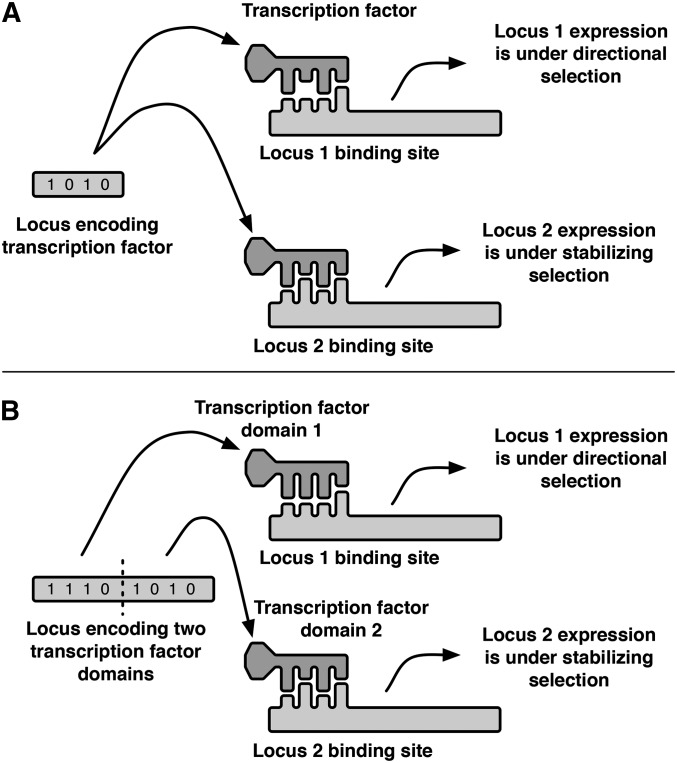Figure 1.
Three-locus regulatory network in which a pleiotropic transcription factor (TF) regulates the expression of two downstream loci. Locus 1 is under directional selection while locus 2 is under stabilizing selection. At each locus, expression depends on the fit between the transcription factor and a binding site in the cis-regulatory region. The binding preference of the transcription factor and the nucleotide sequence of the cis-regulatory site are represented as binary strings, whose total number of matching positions determines the binding strength. For illustrative purposes, only 4 bits of the binding interaction are shown. An adaptive change in the expression of locus 1 may be accomplished either by a mutation in its cis-binding site or in the transcription factor. Changes in the transcription factor select for compensatory mutations in the cis-binding site of locus 2. Thus, if selection on locus 1 results in interpopulation divergence in the transcription factor, hybrid misregulation of both loci will occur as each binding interaction evolves a unique fit to produce the favored expression level in parent populations. (A) “Pleiotropic model” where a single domain of the TF regulates both downstream loci. (B) “Two-domain model” where two nonrecombining domains of the TF independently regulate the downstream loci.

